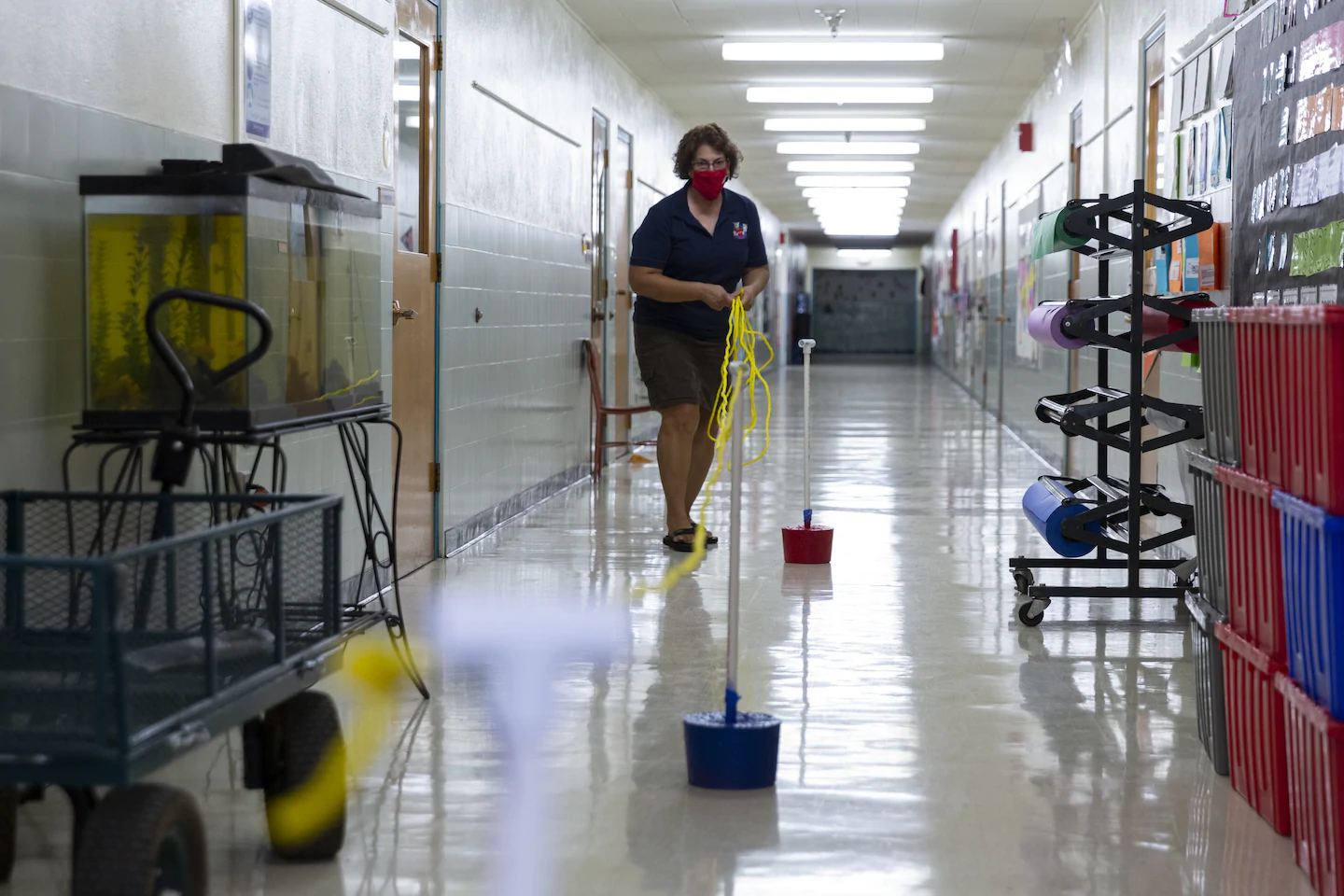Here are some significant developments:
- Democrats assailed President Trump’s efforts to undermine the Postal Service as millions of Americans prepare to vote by mail amid the pandemic. “What you are witnessing is a president of the United States who is doing everything he can to suppress the vote, make it harder for people to engage in mail-in balloting at a time when people will be putting their lives on the line by having to go out to a polling station,” Sen. Bernie Sanders (I-Vt.) told NBC’s “Meet the Press.”
- A federal judge has ordered Immigration and Customs Enforcement officials to immediately test all inmates and staff members at an immigration detention center in Bakersfield, Calif., following an outbreak at the facility, the Los Angeles Times reported. The order came after the judge learned that nearly half of a group of detainees at the Mesa Verde ICE Processing Facility had tested positive last week.
- The United States continues to report more than 1,000 coronavirus-related deaths every day. Health officials reported 1,220 new deaths and 57,120 new infections Saturday — roughly even with the 1,117 deaths and 56,555 cases announced on the same day last week.
- The Food and Drug Administration granted emergency use authorization Saturday for a saliva-based coronavirus test, developed by Yale University researchers, that aims to reduce turnaround times in commercial laboratories.
School closures and other public health measures may have contributed to initially low rates of coronavirus infections in children early in the pandemic, according to the CDC.
“This may explain the low incidence in children compared with adults,” the agency said in its guidance. “Comparing trends in pediatric infections before and after the return to in-person school and other activities may provide additional understanding about infections in children.”
Children between 5 and 17 years old also test positive for the novel coronavirus at higher rates than any other age group, according to CDC data, with positivity rates exceeding 10 percent in public and private lab tests.
The virus incubation period is the same for children as it is for adults. Children are far less likely to develop severe symptoms, but when they are hospitalized for complications from the virus, about a third are sent to intensive care units, the same rate as adults, according to the CDC.
The new academic year could bring new challenges, especially in states where daily infection numbers have increased significantly in recent weeks, like Hawaii, South Dakota and Illinois. As politicians, district administrators and parents continue to debate the wisdom of resuming in-person learning, schools that have already started offer anecdotal data about the challenges of reopening.
In Mississippi, where most children are returning to school for in-person learning, more than 100 students and staff members have tested positive in recent days, and hundreds more have been forced to quarantine. Nearly half the state’s schools have reported cases, the Clarion Ledger recently reported. The state also has the highest daily reported deaths in the country, according to tracking by The Washington Post.
Gov. Tate Reeves (R) said Sunday that the virus spread was not pervasive enough in Mississippi schools to justify any shutdowns. He said the state had plans in place to take action if infections become more widespread, but he dismissed concerns about school outbreaks, claiming, without citing specific evidence, that most infected children had contracted the virus from elsewhere in the community.
“Keep this in perspective. We have 300,000 kids in classrooms. We’ve had approximately 100 cases that have been confirmed positive,” he told CBS News’s “Face the Nation.”
“The point is, no kid, whether they’re in school or not, is completely immune from getting the virus,” he said. “And so we’ve got to take measures to make sure that those kids have the opportunity to learn.”
In other places where the academic year is beginning, virus concerns have already forced officials to cancel classes or reverse plans to bring students back after attempting to reopen amid the pandemic.
A Nebraska school district on Saturday pushed classes back for a week after three staff members tested positive. Schools in Georgia, Tennessee and Indiana, among other states, also recently canceled in-person learning after students and employees fell ill with covid-19, the disease caused by the virus.
In Arizona, a school district that voted to resume in-person learning despite missing state health benchmarks paused its reopening indefinitely after teachers threatened not to show up, citing fears about the virus’s spread.
“We have received an overwhelming response from staff indicating that they do not feel safe returning to classrooms with students,” Gregory Wyman, the district superintendent, said in a note to parents over the weekend.
The series of false starts doesn’t bode well for districts that have moved forward with in-person reopening plans advocated by the Trump administration, which has insisted that a full-fledged return to school is essential for children’s academic and social well-being.
White House officials have continued to press their case for reopening schools. Jared Kushner, the president’s son-in-law and senior White House adviser, told “Face the Nation” Sunday that he didn’t believe the coronavirus posed serious risks to children, especially compared to the flu, and said he and Ivanka Trump had no qualms about their children returning.,
“We absolutely will be sending our kids back to school,” he said, “and I have no fear in doing so.”
Former FDA commissioner Scott Gottlieb cautioned against relying on Kushner’s comparison of children’s deaths from the novel coronavirus to the number who die from the flu each year. In his own interview on “Face the Nation,” Gottlieb said the new virus has not been as prevalent in children.
He said the roughly 330,000 children who have been diagnosed with the coronavirus is probably a significant undercount and that about 3 million are likely to have been infected. Of those, Gottlieb said about 90 have died. By comparison, he said the flu causes about 11 million symptomatic illnesses in children each year and roughly 400 deaths.
“There’s a lot we don’t understand about covid in kids,” Gottlieb said. “I think we need to be careful about making comparisons to flu, and the death and disease we see in flu, relative to covid.”


















